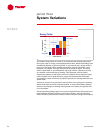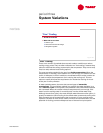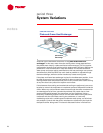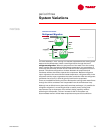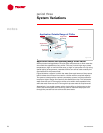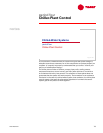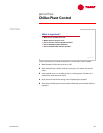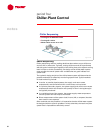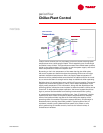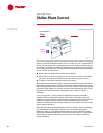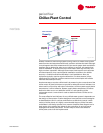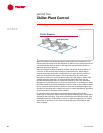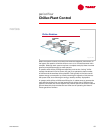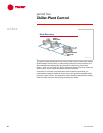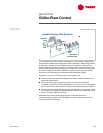
82 TRG-TRC016-EN
notes
period four
Chiller-Plant Control
Chiller Sequencing
Chiller sequencing refers to making decisions about when to turn chillers on
and off, and in what order. Typically, turning chillers on and off is performed
with the goal of matching the capacity of the chiller plant to the system cooling
load. In order to do this successfully, the design of the chilled-water system
must provide the control system with variables that are good indicators of
system load.
The hydraulic design and size of the chilled-water system will determine the
possible method(s) for effectively monitoring system load. Typical methods
for load monitoring include:
n In series- or parallel-piped systems, the supply- and return-water
temperatures, and sometimes chiller current draw, are monitored.
n In a primary-secondary system, the system supply and chiller return-water
temperatures and/or the direction and quantity of flow in the bypass pipe
are typically measured.
n In a variable-primary-flow system, the system supply-water temperature
and the system flow rate may be monitored.
n Direct measurement of the system load (in tons, kW, or amperes) has also
been used in some systems.
Other methods are also possible. It is imperative that the chilled-water system
be designed with the control variables in mind; otherwise, the result may be a
system that is impossible to efficiently control.
Chiller Sequencing
▲ Turning on an additional chiller
▲ Turning off a chiller
▲ Which chiller to turn on or off?
Figure 90



